 W
WAdela of Normandy, of Blois, or of England, also known as Saint Adela in Roman Catholicism, was a daughter of William the Conqueror and Matilda of Flanders who later became the Countess of Blois, Chartres, and Meaux by marriage to Stephen II, Count of Blois. Her husband greatly benefited from the increased social status and prestige that came with such a marriage. She brought with her not only her bloodline, but a wedding gift of money and other movable goods from the prodigious store of Anglo-Norman wealth. She was regent of Blois during the absence of her spouse in 1096–1100 and 1101–02, and during the minority of her son from 1102 until 1120.
 W
WThe County of Forcalquier was a large medieval county in the region of Provence in the Kingdom of Arles, then part of the Holy Roman Empire. It was named after the fortress around which it grew, Forcalquier.
 W
WAdela of Champagne, also known as Adelaide, Alix and Adela of Blois, was Queen of France as the third wife of Louis VII. She was regent of France from 1190 to 1191 while her son Philip II participated in the Third Crusade.
 W
WAgnes of Loon (1150–1191), was a duchess consort of Bavaria, married to Otto I of Wittelsbach, Duke of Bavaria. She was regent of Bavaria during the minority of her son, Louis I, Duke of Bavaria, from 1183 to 1191. She was the daughter of Louis I, Count of Loon, and Agnes of Metz. Agnes was described as a forceful regent, who managed to secure the inheritance of her son.
 W
WAnastasia of Greater Poland, was Duchess of Pomerania by marriage to Bogislaw I, Duke of Pomerania, and regent from 1187 until 1208.
 W
WArwa Al-Sulayhi, full name Arwā bint Aḥmad ibn Muḥammad ibn Jaʿfar ibn Mūsā Aṣ-Ṣulayḥī was a long-reigning ruler of Yemen, firstly as the co-ruler of her first two husbands and then as sole ruler, from 1067 until her death in 1138. She was the last of the rulers of the Sulayhid Dynasty and was also the first woman to be accorded the prestigious title of Hujjah in the Isma'ili branch of Shia Islam, signifying her as the closest living image of God's will in her lifetime, in the Ismaili doctrine. She is popularly referred to as As-Sayyidah Al-Ḥurrah, Al-Malikah Al-Ḥurrah (Arabic: ٱلْمَلِكَة ٱلْحُرَّة or Al-Ḥurratul-Malikah, and Malikat Sabaʾ Aṣ-Ṣaghīrah. She is known by the name Arwa. However, this name does not have any historical source and all historical sources name her "Sayyidah bint Ahmed".
 W
WBeatrice I was Countess of Burgundy from 1148 until her death, and was also Holy Roman Empress by marriage to Frederick Barbarossa. She was crowned empress by Antipope Paschal III in Rome on 1 August 1167, and as Queen of Burgundy at Vienne in August 1178.
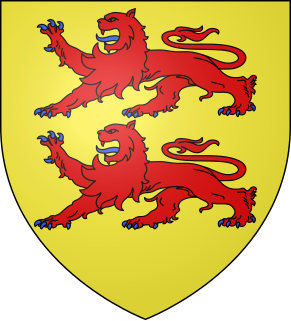 W
WThe County of Bigorre was a small feudatory of the Duchy of Gascony in the ninth through 15th centuries. Its capital was Tarbes.
 W
WThe County of Bigorre was a small feudatory of the Duchy of Gascony in the ninth through 15th centuries. Its capital was Tarbes.
 W
WBéatrice, Countess of Albon and Dauphine of Viennois (1161–1228) was ruling countess and dauphine in 1162–1228, in succession upon the death of her father Guigues V.
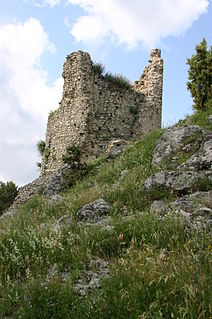 W
WClementia was the countess of Catanzaro in the Kingdom of Sicily. She played a major role in the baronial rebellion of 1160–62.
 W
WConstance of Hauteville (1128–1163) was the ruling Princess of Antioch from 1130 to 1163. She was the only child of Bohemond II of Antioch by his wife, Alice of Jerusalem. Constance succeeded her father at the age of two, after he fell in battle, although his cousin, Roger II of Sicily, laid claim to Antioch. Her mother assumed the regency, but the Antiochene noblemen replaced her with her father, Baldwin II of Jerusalem. After he died in 1131, Alice again tried to take control of the government, but the Antiochene barons acknowledged the right of her brother-in-law, Fulk of Anjou, to rule as regent for Constance.
 W
WConstance of France was the daughter of King Philip I of France and Bertha of Holland. She was a member of the House of Capet and was Countess of Troyes from her first marriage and Princess of Antioch from her second marriage. She was regent during the minority of her son.
 W
WConstance I was Queen regnant of Sicily in 1194–98, jointly with her spouse from 1194 to 1197, and with her infant son Frederick II, Holy Roman Emperor, in 1198, as the heiress of the Norman kings of Sicily. She was also Holy Roman Empress by marriage to Henry VI, Holy Roman Emperor.
 W
WDouce II was Countess of Provence and Viscountess of Gévaudan and Carlat for a few months in 1166, as well as Countess of Melgueil for some time in 1172. She was a member of the House of Barcelona, a dynasty of Catalan origin that acquired the County of Provence through the marriage of Douce I to Ramon Berenguer III, Count of Barcelona.
 W
WIrene Doukaina or Ducaena was a Byzantine Empress by marriage to the Byzantine emperor Alexios I Komnenos, and the mother of the emperor John II Komnenos and of the historian Anna Komnene.
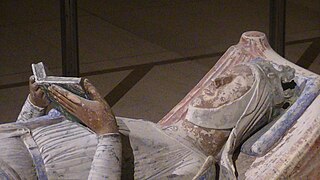 W
WEleanor of Aquitaine was queen consort of France (1137–1152) and England (1154–1189) and duchess of Aquitaine in her own right (1137–1204). As the heir of the House of Poitiers, rulers in southwestern France, she was one of the wealthiest and most powerful women in western Europe during the High Middle Ages. She was patron of literary figures such as Wace, Benoît de Sainte-Maure, and Bernart de Ventadorn. She led armies several times in her life and was a leader of the Second Crusade.
 W
WElisabeth, also known as Isabelle Mabille, was ruling Countess of Vermandois from 1168 to 1183, and also Countess of Flanders by marriage to Philip I, Count of Flanders. She was the eldest daughter of Ralph I, Count of Vermandois and his second spouse, Petronilla of Aquitaine.
 W
WElvira was a Leonese infanta and the Lady of Toro, Zamora, the daughter of Ferdinand I of León and Castile and Sancha of León, and granddaughter-namesake of Elvira Menéndez, and also an aunt of Elvira of Castile, Queen of Sicily.
 W
WGertrude of Süpplingenburg was, by her two successive marriages, Duchess of Bavaria from 1127 to 1138, Margravine of Tuscany from 1136 to 1139, and Duchess of Saxony from 1137 to 1138, Margravine of Austria and again Duchess of Bavaria until her death. She was regent of Saxony during the minority of her son in 1139–1142.
 W
WHelena of Znojmo, was a Bohemian princess, a member of the Přemyslid dynasty. She was the daughter of Duke Conrad II of Znojmo and his Serbian wife Maria of Rascia. Helena was probably named after her maternal aunt, Queen Helena of Hungary, wife of King Béla II.
 W
WHelena of Serbia was Queen of Hungary as the wife of King Béla II. After her husband's death, she governed Hungary as regent from 1141 to September 1146 together with her brother, Beloš, during the minority of her eldest son, Géza II, came of age.
 W
WHodierna of Jerusalem was a Countess consort of Tripoli through her marriage to Raymond II of Tripoli, and regent of the County of Tripoli during the minority of her son from 1152 until 1155.
 W
WHōjō Masako was a political leader who exercised significant power in the early years of the Kamakura period, which was reflected by her contemporary sobriquet of the "nun shogun". She was the eldest daughter of Hōjō Tokimasa and sister of Hōjō Yoshitoki, both of them shikkens of the Kamakura shogunate. She was the wife of Minamoto no Yoritomo, and mother of Minamoto no Yoriie and Minamoto no Sanetomo, the first, second and third shōguns of the Kamakura period.
 W
WIsabella I was Queen regnant of Jerusalem from 1190 to her death. She was the daughter of Amalric I of Jerusalem and his second wife Maria Comnena. Her half-brother, Baldwin IV of Jerusalem, engaged her to Humphrey IV of Toron. Her mother's second husband, Balian of Ibelin, and his stepfather, Raynald of Châtillon, were influential members of the two baronial parties. The marriage of Isabella and Humphrey was celebrated in Kerak Castle in autumn 1183. Saladin, the Ayyubid sultan of Egypt and Syria, laid siege to the fortress during the wedding, but Baldwin IV forced him to lift the siege.
 W
WIsabella of Hainault was a Queen of France as the first wife of King Philip II. She was also formally a ruling countess of Artois de jure between 1180 and 1190.
 W
WErmesinde I, reigned as Countess of Luxembourg from 1197 until her death in 1247.
 W
WMelike Mama Hatun, or simply Mama Hatun, was a female ruler of the Saltukid dynasty, with its capital in Erzurum, for an estimated nine years between 1191 and 1200.
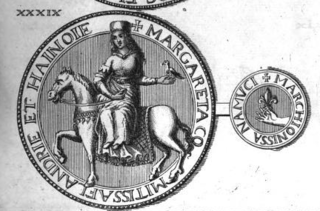 W
WMargaret I was the countess of Flanders suo jure from 1191 to her death.
 W
WMargaret of Navarre was the queen consort of the Kingdom of Sicily during the reign of William I (1154–1166) and the regent during the minority of her son, William II.
 W
WMary of Hungary, of the Árpád dynasty, was Queen consort of the Kingdom of Naples. She was a daughter of Stephen V of Hungary and his wife Elizabeth the Cuman. Mary served as Regent in Provence in 1290–1294 and in Naples in 1295–96, 1296–98, and 1302, during the absences of her consort.
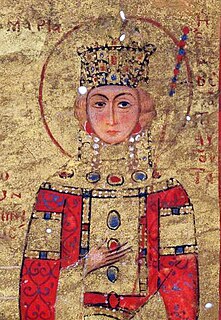 W
WMaria of Antioch (1145–1182) was a Byzantine empress by marriage to Byzantine Emperor Manuel I Komnenos, and regent during the minority of her son porphyrogennetos Alexios II Komnenos from 1180 until 1182.
 W
WMarie of France was a French princess and Countess consort of Champagne. She was regent of the county of Champagne in 1179–1181, and in 1190–1197.
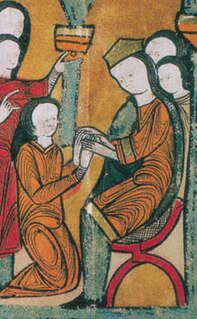 W
WMary was a Viscountess of Béarn, Gabardan, and Brulhois from 1170 to 1171 in her own right.
 W
WMatilda of Scotland, also known as Good Queen Maud or Matilda of Blessed Memory, was Queen of England and Duchess of Normandy as the first wife of King Henry I. She acted as regent of England on several occasions during Henry's absences: in 1104, 1107, 1108, and 1111.
 W
WMatilda of Tuscany, was a member of the House of Canossa and one of the most powerful nobles in Italy in the second half of the 11th century.
 W
WMelisende was the hereditary Lady of Arsuf from 1177 and the second wife of the powerful nobleman John of Ibelin, the lord of Beirut (1179–1236), who led the opposition to Emperor Frederick II when he tried to impose his authority in the Kingdom of Jerusalem and the Kingdom of Cyprus.
 W
WMelisende was Queen of Jerusalem from 1131 to 1153, and regent for her son between 1153 and 1161 while he was on campaign. She was the eldest daughter of King Baldwin II of Jerusalem, and the Armenian princess Morphia of Melitene.
 W
WEmpress Meng was a daughter of Meng Yuen and the Chinese Empress consort of the Song dynasty, married to Emperor Zhezong of Song. She served as a regent of China in 1127, and during the minority of Emperor Zhang, the son of Emperor Gaozong of Song, who was temporarily placed upon for 25 days in 1129. She played a significant political role in Chinese politics: first by legitimizing the Da Chu dynasty in 1127, and then ending it by legitimizing Emperor Gaozong of Song as the heir of the Song dynasty.
 W
WPetronilla, whose name is also spelled Petronila or Petronella, was the queen of Aragon from the abdication of her father, Ramiro II, in 1137 until her own abdication in 1164. She was the last ruling member of the Jiménez dynasty in Aragon, and by marriage brought the throne to the House of Barcelona.
 W
WPetronilla of Lorraine was Countess of Holland by marriage to Floris II, Count of Holland, and regent of the County of Holland during the minority of her son Dirk VI in 1121-1129. She was a daughter of Theodoric II, Duke of Lorraine and Hedwig of Formbach.
 W
WSibylla of Acerra (1153–1205) was Queen of Sicily as the wife of King Tancred. She was regent in 1194 for their son, King William III. She was the sister of Count Richard of Acerra.
 W
WSibylla of Anjou was a countess consort of Flanders. She was the daughter of Fulk V of Anjou and Ermengarde of Maine, and wife of William Clito and Thierry, Count of Flanders. She was the regent of Flanders in 1147-1149.
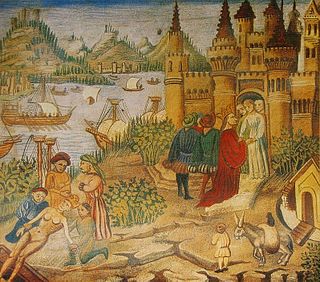 W
WSibylla of Conversano was a wealthy Italian heiress, Duchess of Normandy by marriage to Robert Curthose. She was regent of Normandy during the absence of her spouse.
 W
WThe County of Bigorre was a small feudatory of the Duchy of Gascony in the ninth through 15th centuries. Its capital was Tarbes.
 W
WTamar the Great reigned as the Queen of Georgia from 1184 to 1213, presiding over the apex of the Georgian Golden Age. A member of the Bagrationi dynasty, her position as the first woman to rule Georgia in her own right was emphasized by the title mepe ("king"), afforded to Tamar in the medieval Georgian sources.
 W
WTheresa was Countess of Portugal, and for a time claimant to be its independent Queen. She rebelled against vasalic ties with her half-sister Queen Urraca of León and Castile. She was recognised as Queen by Pope Paschal II in 1116, but was captured and forced to accept Portugal's vassalage to León in 1121, being allowed to keep her royal title. Her political alliance and amorous liaison with Galician nobleman Fernando Pérez de Traba led to her being ousted by her son, Afonso Henriques, who with the support of the Portuguese nobility and clergy, defeated her at the Battle of São Mamede in 1128.
 W
WTheresa of Portugal was Countess of Flanders by marriage to Philip I, Count of Flanders, and Duchess of Burgundy by marriage to Odo III, Duke of Burgundy. She was the daughter of the Portuguese king Afonso I and Matilda of Savoy. She served as co-regent of Portugal with her brother during the illness of their father Afonso I of Portugal from 1172 until 1173, and regent of Flanders during the interim period after the death of her spouse and the accession of his heir.
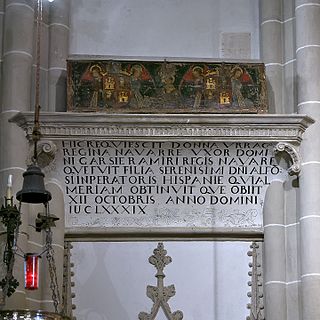 W
WUrraca Alfonso, also known as Urraca the Asturian, illegitimate daughter of Alfonso VII of León, was Queen Consort of Navarre by her marriage to García Ramírez. After becoming a widow, she returned to her homeland and was the regent of Asturias from 1153 to 1165. Urraca was involved in a rebellion against her half-brother, King Ferdinand II of León and with her second husband, Álvaro Rodríguez de Castro attempted to secure the independence of Asturias.
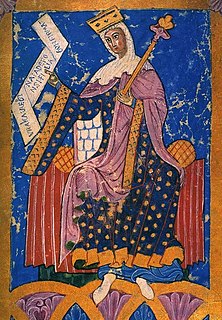 W
WUrraca called the Reckless, was Queen of León, Castile, and Galicia from 1109 until her death. She claimed the imperial title as suo jure Empress of All Spain and Empress of All Galicia.
 W
WAdelaide del Vasto was countess of Sicily as the third spouse of Roger I of Sicily, and Queen consort of Jerusalem by marriage to Baldwin I of Jerusalem. She served as regent of Sicily during the minority of her son Roger II of Sicily from 1101 until 1112.
 W
WEleanor of Vermandois also known as Eléonore de Vermandois was ruling countess of Vermandois in 1182-1213 and by marriage countess of Ostervant, Nevers, Auxerre, Boulogne and Beaumont. She was a daughter of Ralph I, Count of Vermandois, and his second spouse, Petronilla of Aquitaine.
 W
WEmpress Xiang was a Chinese Empress consort of the Song Dynasty, married to Emperor Shenzong of Song. She acted as co-regent of China during the reign of her son, Emperor Huizong of Song, in 1100.
 W
WỶ Lan or Empress Mother Linh Nhân was a Vietnamese regent, the imperial concubine of Lý Thánh Tông, the third emperor and the natural mother of Lý Nhân Tông, the fourth emperor of the Lý Dynasty. She served as regent during the absence of her spouse in 1066-68, and as co-regent during the reign of her son in 1073-1117.